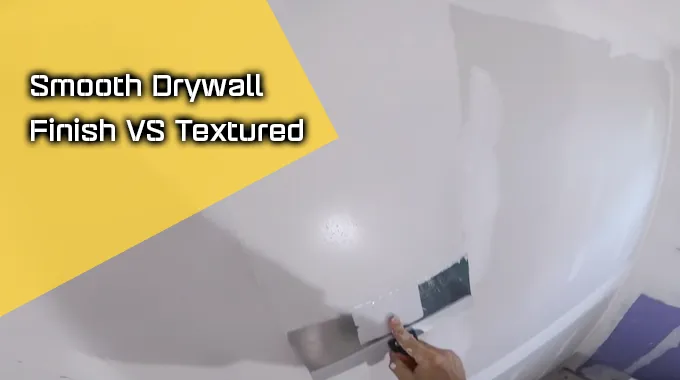Last Updated on March 20, 2023
In a conundrum over your home’s drywall finish? Should you go for a sleek, smooth drywall finish or something more textured? Each option has its benefits and drawbacks and offers very different vibes, so which one is right for you?
With textured drywall, you won’t have to worry about scratches or other unsightly marks, although keeping it clean might be a bit more challenging. On the flip side, smooth versions wipe clean easily once sealed, giving your walls an attractive and hassle-free sheen.
Ready to find out the pros and cons of adding a little texture? Let’s jump in. We’re exploring how smooth drywall finish or textured drywalls can affect your house’s value. Plus, check out different texture finishes you could try for maximum effect.
Smooth Drywall Finish vs Textured Finish: What are the Differences?
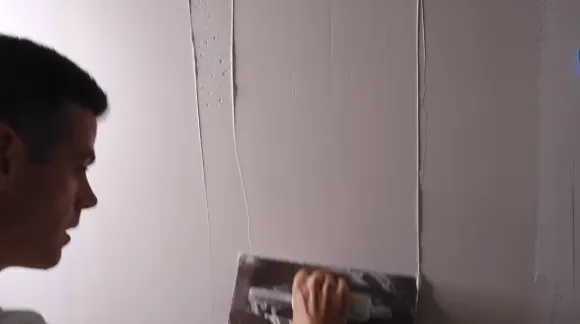
Both smooth and textured drywall finish can add a unique and beautiful look to any home interior, but there are some key differences between them:
Visual Appeal Differences
A smooth drywall finish creates a sleek, pristine, sophisticated look with sharp lines and clean edges due to its flat surface. This type of finish also helps to create the illusion of a larger space, as walls seem more spacious than when painted with a textured finish.
On the other hand, textured walls offer a much different visual interest and appeal with rough or bumpy surfaces that provide an interesting texture and depth to a room’s decor.
Design Possibilities
In terms of design possibilities, smooth drywall allows for endless options in terms of paint colors and textures. It is also much easier to hang pictures or other decorations on this type of wall due to its flat surface.
Textured drywalls often require special tools and techniques to hang objects while maintaining their original shape properly. Furthermore, textured finishes limit design options for painting due to their rugged surfaces, which may display blemishes more quickly than the smooth drywall surface.
Installation Differences
The installation process for both drywall finishes types is relatively straightforward but requires specialized knowledge to achieve optimal results.
Smooth drywall requires precise measuring, cutting, and application techniques to appear flawless upon completion. Also, smooth drywall is typically quicker than textured drywall because there is less time required for troweling or setting up special equipment like hoppers and sprayers for texturing compound application.
Meanwhile, textured walls involve applying specialized tools and skillful manipulation to achieve the desired texture pattern without visible flaws or blemishes.
Furthermore, if you’re considering installing wallpaper after your new drywall finish has been completed, smooth drywall may be a better choice because it will provide a better-finished look than an unevenly-textured surface would offer behind wallpaper seams.
Durability & Maintenance Requirements
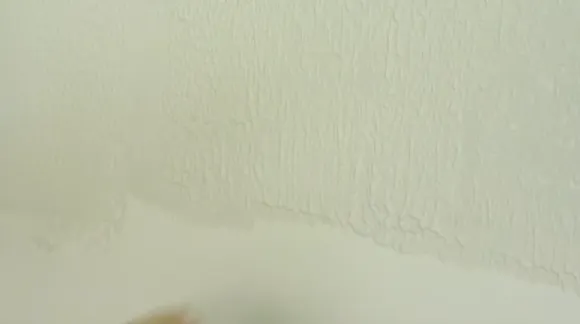
Both smooth drywall and textured finishes are highly durable, provided they are installed correctly by an experienced professional drywall contractor.
Smooth drywalls are generally less scratch resistant than textured ones, so they may require more maintenance if exposed to harsh elements such as moisture or sun exposure too frequently.
Also, textured finishes may require occasional repairs if areas become chipped or dented due to wear over time. In contrast, smooth drywalls tend not to show signs of damage easily unless subjected to extreme conditions.
Cost-Effectiveness
In terms of cost-effectiveness, it all depends on the homeowner’s budget. Still, both types of wall finishes offer fairly decent pricing depending on materials used during installation and labor costs associated with hiring professionals.
Although both options are generally affordable, smooth surface installation typically costs less due to the ease of installation compared to texture installations which often require specialized tools and materials beyond traditional drywall supplies.
But, as mentioned above, this cost difference may be balanced by potential durability benefits from smooth surfaces over time. This could reduce repair costs from regular wear and tear on textural surfacing applications versus smoother ones.
Pros and Cons of Smooth Drywall Finish over Textured Finish

Homeowners who want to give their walls a fresh, modern look might choose a smooth drywall finish instead of textured. While smooth finishes have some advantages over textured ones, they also have drawbacks:
1. Advantages of Smooth Drywall Finish
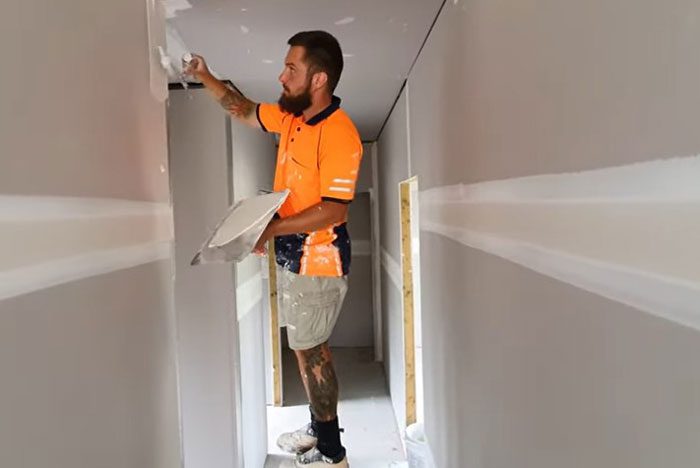
Easier to Clean and Repair
The lack of texture on a smooth wall makes it easier to clean since dirt and dust will not accumulate in the crevices like on a textured one.
Also, when repairs need to be made, there is no need to match textures or worry about improper application techniques that could make the patch stand out from the rest of the wall.
Gives a Sleek, Refined Look
Smooth walls create an elegant feel in any space without overwhelming the eye with too much detail or patterning. They also work well in more contemporary settings than textured surfaces, which might be better suited for traditional aesthetics.
Easier to Paint and Decorate
Painting smooth walls is generally less time-consuming because there is no need to work around crevices or contours like on a textured wall.
Plus, when decorating with art or photographs, you don’t have to worry about making sure they fit into any particular texture pattern like you would with a textured surface.
Resists Wear and Damage
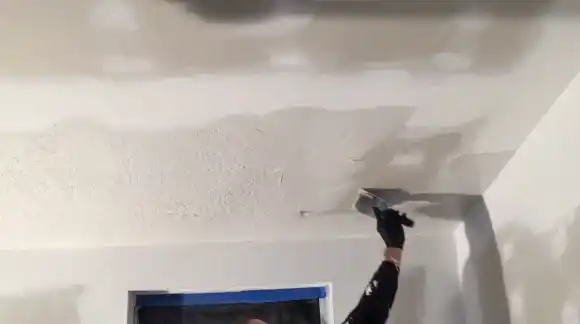
With less texture on the wall, there is less chance of anything snagging or creating visible wear patterns over time, as there can be with certain types of textures, such as popcorn ceilings.
Reduce Sound Deflection
Smooth surfaces are better at reducing sound deflection due to their lack of surface irregularities. This can otherwise cause noise reverberation throughout the room if not properly insulated from behind the drywall sheetrock.
No Grungy Build-up Over Time
Without texture present, dirt and debris won’t accumulate in nooks and crannies that are difficult or impossible to reach during cleaning, making it look cleaner for extended periods without extra maintenance every so often.
2. Disadvantages of Smooth Drywall Finish
More Time Consume to Install
Installing a smooth (Level 5) drywall finish requires greater precision than spraying on multiple layers of the drywall mud, as when targeting certain textures such as knockdown or skip trowel finishes.
This means that installation tends to take longer with this type of finish depending on how intricate your desired pattern is.
Creates Less Interesting Visual Interest
Smooth finishes may appear bland when compared side by side with more highly detailed textures such as stucco or Venetian plaster styles, which can create depth and visual interest in any space.
Cannot Conceal Imperfections
Textures such as orange peel can help conceal imperfections in walls due to their raised nature. But this isn’t possible with a smooth finish where any bumps, cracks, and dents will still be visible after painting.
May Require Multiple Coats of Paint
Since perfectly smooth walls aren’t naturally occurring, getting them perfectly flat sometimes requires multiple coats of paint. This can add additional expenses and labor hours depending on the size of the area being painted.
Pros and Cons of Textured Finish over Smooth Drywall Finish
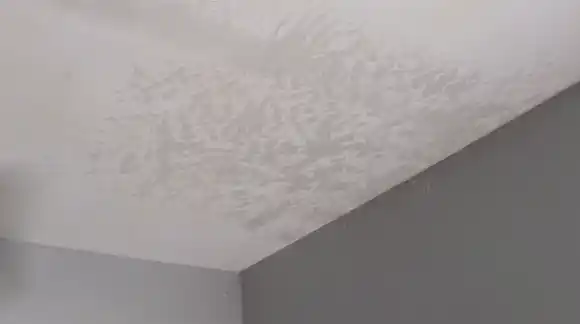
Textured finishes can offer a variety of visual effects and creative freedom, as well as the ability to cover up any imperfections in the walls. But, they also have significant drawbacks that must be considered before deciding:
1. Advantages of Textured Finish:
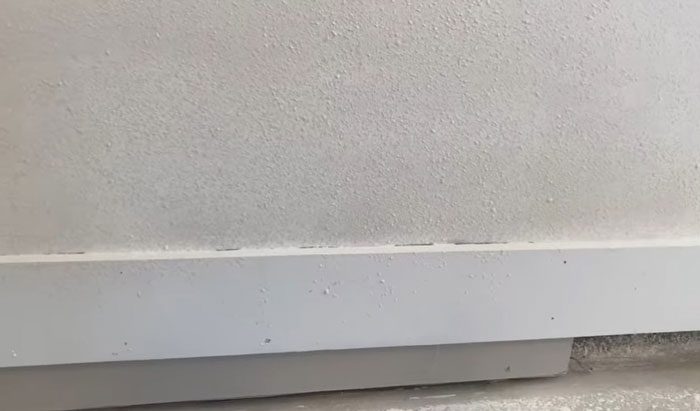
Variety of Visual Effects
Textured finishes provide an array of visual effects, from subtle stippling to more advanced embossing and faux finishes. They are versatile, creating different moods and atmospheres depending on your preference.
Cover-Up Imperfections
Texturing is ideal for covering up existing wall flaws, like cracks, bumps, or holes, without worrying about repainting the entire area or using another repair method. It also gives you more control over how much texture you want on each surface and how much coverage it provides.
Allows Creative Freedom
Texturing is perfect for those who want the freedom to be creative with their wall décor and design, allowing them to come up with unique methods that show off their style and taste.
Do Not Accumulate Grunge
Compared to other types of wall finishes that may accumulate dirt quickly, textured finishes tend to collect grime slowly, so they can stay looking cleaner for extended periods without requiring constant maintenance and cleaning efforts from homeowners.
Reduce Echoes
In addition to their aesthetic benefits, textured finishes significantly reduce loud noises’ echoes. This makes them perfect for larger rooms requiring sound-dampening qualities, such as entertainment centers or home theaters.
2. Disadvantages Of Textured Finish:
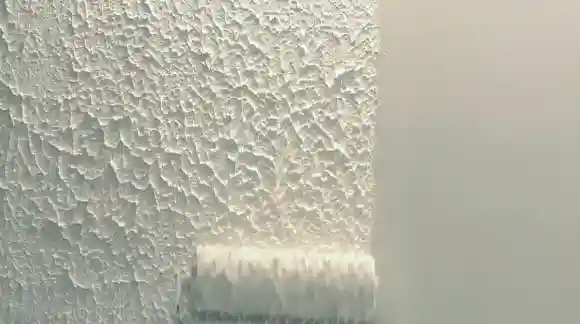
Harder to Patch and Repair
One major downside of texturing on drywall is how difficult it is to patch or repair once it’s been applied due to its uneven texture. This can prevent spackling compounds from adhering properly unless extreme care is taken during application.
Might Require Professional Installation
Since texturing methods require much more skill than just smoothing down surfaces with a roller brush, professional installation may be necessary.
If you feel uncomfortable tackling this job yourself, you may need to hire a contractor or drywall professional to complete the job.
Difficult to Paint Over
If you ever decide to paint over your textured walls to switch colors or design patterns, this could prove difficult since paint won’t adhere very well due to uneven surfaces created during the application.
Less Refined Look
Many people find that textured finishes give walls a less refined look than smoother surfaces. This could impact resale value if you sell your home in future years.
Popular Types of Drywall Textures Finish
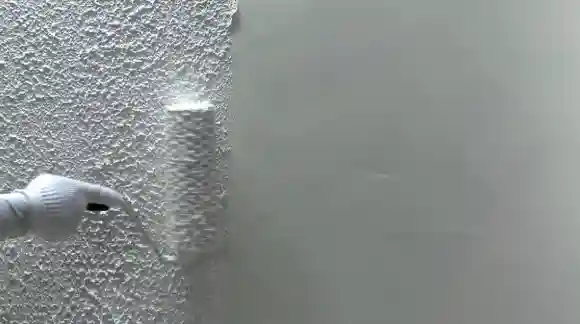
Whether you’re looking for something subtle or dramatic, there are many types of drywall textures with unique looks, which can help create the perfect atmosphere in any room.
Popcorn Ceiling Drywall Texture
Popcorn ceiling is a common drywall texturing technique used in many homes. It is created by spraying a mixture of dry joint compound and water onto the ceiling with a unique sprayer. The resulting texture looks like popcorn, hence the name.
This texture is great for hiding imperfections and creating a soft, natural look on ceilings and walls. It can also help reduce sound reverberation in an ample space. Some homeowners may find it outdated, as it was typically used in homes built before the 1980s.
Orange Peel Drywall Texture
Orange peel texture is made by adding a joint compound onto the wall or ceiling and then lightly spraying with water to get an effect that looks much like the skin of an orange, hence the name. This texture offers more coverage than popcorn without appearing too heavy or textured on the wall.
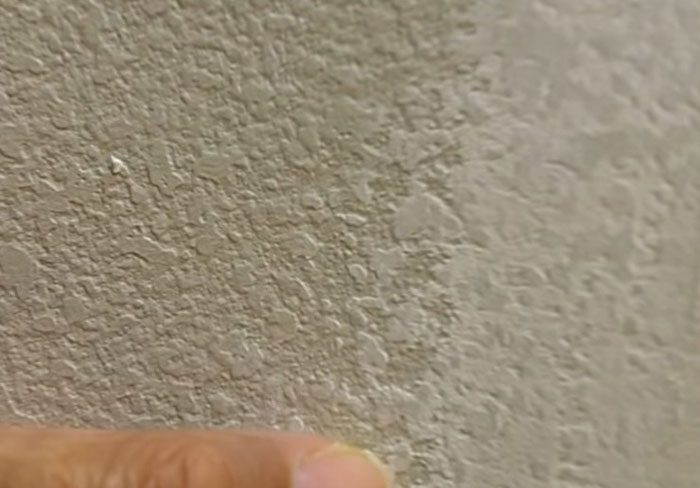
It’s also great for hiding imperfections while creating visual interest in any room. The downside is that it may require more repair work when holes are needed to be patched or if repairs need to be done after painting due to inconsistent levels over time.
Sand Swirl Drywall Texture
Sand swirl texture adds dimension and depth to walls by combining the joint compound with sand particles sprayed with a special machine or hand-troweled into small circles on the wall or ceiling surface using a trowel tool.
This texturing creates an attractive look often used in bathrooms, kitchens, and other areas where a more exotic look is desired. Although this technique is aesthetically pleasing, it requires more skill when applied compared to other techniques.
Rosebud Drywall Texture
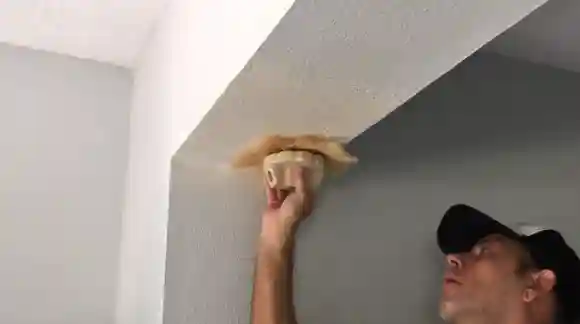
Rosebud drywall texture is a unique, swirling way to add dimension and beauty to your walls or ceilings. This technique uses an air compressor with a special nozzle attachment that releases joint compounds at close range. Soft swirls created by the reduced pressure create a fantastic effect, like magical art for your home.
The result will be tiny rosebuds throughout the surface, adding visual interest without becoming too overwhelming, like some drywall textures. Rosebud textures are preferred among those who want something subtle yet visually appealing.
Comb Drywall Texture
Comb drywall texture technique involves running a comb tool (usually made from metal) through a wet joint compound as it’s being sprayed onto walls or ceilings at low-pressure settings within close distances.
The ridges created by this motion give off an attractive 3-dimensional finish perfect for adding some character without becoming too busy on any given surface area.
Typically, comb textures are used in commercial spaces such as offices, banks, stores, etc., due to their ability to offer subtle yet unique details throughout each room they’re applied in.
What is Drywall Smooth Finish Called?
The smooth finish of drywall is commonly referred to as a Level 5 finish. This type of finish results in an ultra-smooth surface with no visible roller marks and very few imperfections.
It often requires applying multiple coats of joint compound and sanding between each coat until it is perfectly smooth. The process can take several hours and requires great patience and attention to detail to achieve the desired result.
Is Smooth Drywall Finish More Expensive Than Texture?
In general, smooth drywall finishes are less expensive than texture, but Level 4 and 5 finishes require multiple layers of joint drywall compound and sanding between each layer to ensure a perfectly smooth surface.
This process can be time-consuming and requires specialized skills, so the cost associated with these types of finishes tends to be higher than a textured finish.
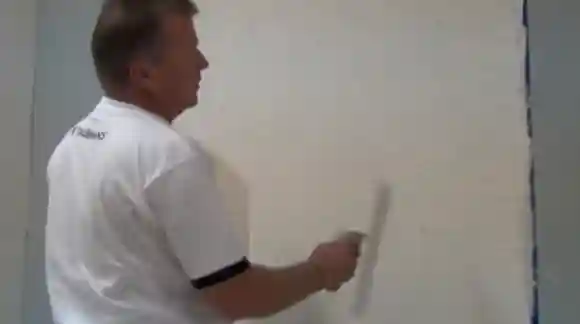
Do Textured or Smooth Drywall Finish Decrease Home Value?
Textured drywall typically appeals less to potential buyers, which may lead to some reduction in home value. Although textured walls have their place, they generally don’t add value like smoother surfaces and can even detract from the look of a space that would otherwise be appealing.
On the other hand, smoothly finished walls tend to be more visually attractive and make spaces appear larger, brighter, and more inviting, all qualities that potential buyers appreciate when viewing homes for sale.
Boost Your Home Ambience: Choose Between a Smooth or Textured Drywall Finish
Choosing between a smooth drywall finish or a textured finish for your home’s walls is ultimately up to you and largely depends on what kind of aesthetic you desire. From visual appeal and design possibilities to installation differences and cost-effectiveness, each has its pros and cons, depending on your specific needs.
Textured walls offer unique visual appeal but may require more maintenance in cleaning and repairing. Conversely, if you’re looking to increase the overall value of your home, then either option might work depending on local market trends.
Ultimately it comes down to the individual’s preferences when it comes down to deciding between a textured or smooth wall finish, so make sure you consider all factors before making your decision.
